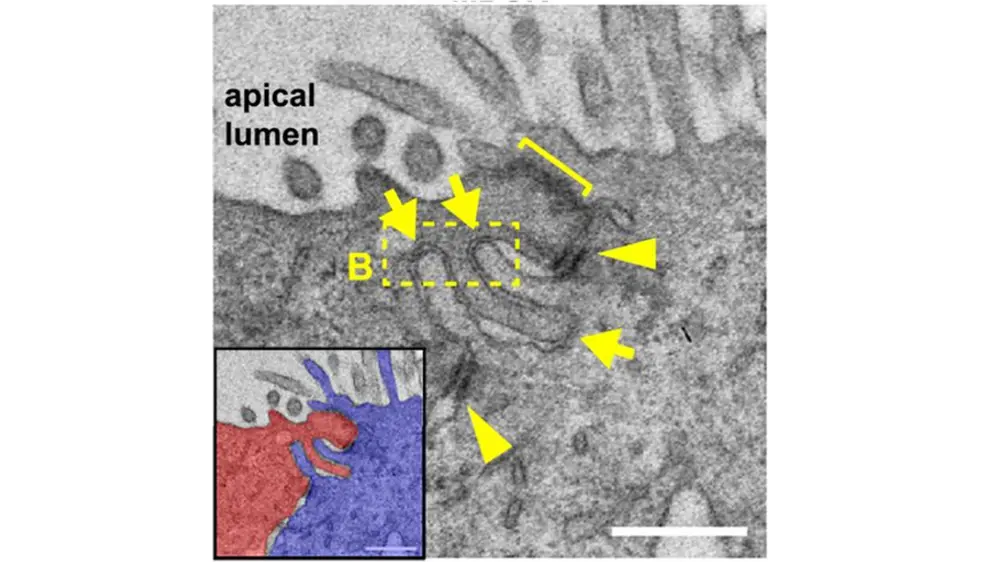
Epithelial cells use an adhesion molecule known as E-cadherin to help build extensive cell-cell adhesive contacts leading to cohesive sheets of cells that separate two different environments. But what happens if the adhesive bonds holding the cells together fail? CDB researchers John Li, Vivian Tang, and Bill Brieher discovered an actin dependent repair mechanism that operates continuously in epithelial cells to fix broken adhesive contacts.
Whenever a cluster of E-cadherin cell-cell adhesion molecules dissolve, the cells respond by extending a thin protrusion (microspike) that pushes into the neighboring cell giving cadherin adhesion molecules another chance to reengage. Once the adhesive cluster is repaired, the microspike withdraws. Inhibiting the proteins necessary for microspike extension leads to large scale rupture of cell-cell contacts and the increased risk of tissue tearing. The results show that maintaining cohesive epithelial sheets is a highly dynamic process requiring continuous maintenance and repair. Key questions for the future are to understand how these protruding microspikes contribute to tissue formation during development and whether their activity is disrupted in disease states like metastatic cancer or inherited kidney disease.
